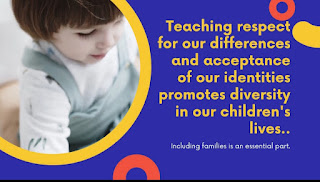Easy breathing techniques to calm children
At the beginning of 2020, with the spread of coronavirus disease (COVID-19) around the world, children deal many challenges in their lives. The satisfaction of natural needs for play, education, and socialization has changed radically. Therefore, an increment of behavioral problems, anxiety, mental instability, and problematic situations may arise.
Some benefits of using breathing techniques
During these moments when children can hardly play or share with other children, the possibility of presenting stress, anxiety, or behavioral problems can increase.Teaching deep breathing techniques helps children by:
✅Relaxing their body and mind.
✅Reducing stress and anxiety.
✅Stabilizing heart rate.
✅Increasing the oxygen levels.
✅Relaxing their body and mind.
✅Reducing stress and anxiety.
✅Stabilizing heart rate.
✅Increasing the oxygen levels.
✅Activating the nervous system for controlling stressful reactions.
✅Distracting the mind and thoughts from anxiety.
Breathing exercises for children
There are many breathing exercises to encourage children to practice and take deep breaths. Experts in Children's Health recommend beginning with simple techniques like belly breathing. This exercise calms children when they are competing in sports, or when feeling stressed and nervous. To teach and practice belly breathing, it is important to tell your child to place a hand on their belly and the other hand on their chest. Also, encourage them to inhale through their nose filling their lungs with air, and downwards to their belly paying attention as the hand on the belly rises. After some seconds, tell your child to exhale slowly through their mouth feeling the hand on the belly lower back down.As your child gets acquainted with deep breathing, and slowly inhales and exhales, tell them to pretend to blow out candles, feeling the air getting out of their mouth or making little noises while breathing. The position of the body needs to be relaxed and laid down on its back. You can substitute their hands on the belly and chest for a little object, like a toy or a book.
Practice breathing techniques with your children when they are calm allow them to learn to use them when they feel overwhelmed and anxious. Practicing at night before going to bed is a good way to establish a routine.
Young children can also learn to practice it, especially by telling them to slow down their breath while counting. As the child gets older, they can count to three when taking a deep breath in, pause slightly, then tell them to take the breath out while counting to four.
Keep in mind that practicing and learning breathing exercises takes time, so avoid pressuring the child. Instead, find together the best way for the child to feel comfortable enjoying the practices.
To learn more about anxiety and stress management for you, your children, and your family, visit a pediatrician or a mental health professional for effective tips and recommendations to contribute and support positively to the physical and mental health of you and them.
Reference
Children’s Health. (2020). Breathing exercises for kids. Childrens.com_______________________
Diana A. Rivera is an Early Childhood Educator, with graduate studies in Educational Psychologist, and author of Be the voice for children. Diana believes and commits to the healthy development, growth, well-being, and learning of all children. The blog posts share ideas and knowledge about educational psychology, child and brain development, parenting, diversity, effective teaching practices, early childhood education, and care to support the empowerment of children and families.









